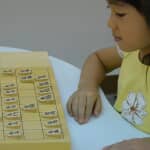9 September 2017
How to Deal with Online Shogi
Today, the spread of smartphones or tables reaches every place in the world and elementary students can easily use them. The ways to enjoy hobbies or favorite things have changed in recent years. To be specific, by far more people have become to enjoy table games such as Othello or card games online.
Shogi isn’t exceptional. There are people who start learning Shogi online before playing it with an actual Shogi board and pieces. On-line Shogi is good for children who don’t have companions to play with.
For them, I am going to discuss how to deal with playing Shogi online.

Incidentally, I will use the words, an “actual Shogi game”, to represent a game played in person and an “on-line Shogi game” to refer to a game played online by two players via the internet or an application. Please keep in mind that an “on-line Shogi game” is different from a game played with a Shogi software.
1. On-Line Shogi Game Is Good for Your Shogi Practice

Please realize an on-line Shogi game is a tool to practice an actual Shogi game. Compared to simple card games, Shogi is a game that might be difficult to start for beginners because it requires players to remember complicated rules and follow a manner in several situations.
On-line Shogi games could be the best to make Shogi more accessible to everyone. I, personally, would recommend using them a lot.
On the other hand, Shogi is one of traditional Japanese cultures in which a manner and Japanese spirit are highly appreciated, which you only can get through playing actual games. I would say actual Shogi games are more attractive and give you more realistic feelings than on-line games.
Next, I will talk about the way to engage in on-line Shogi games as preparation for actual Shogi games.
2. You Can Play in Line with Rules

The notable feature of on-line Shogi games is that you can’t move pieces against Shogi rules. This means a lot for beginners, which is like riding a bike with training wheels.
For beginners, it is very hard to remember the rules precisely.
I dare to say that a lot of fouls can be observed during a game played by players who have just remembered rules. There are three major fouls: Nifu or double pieces of Fu (Pawn), not responding to checking, or moving a piece to the square where the piece can’t go.
If one of the two players has enough skills to notice fouls, the players can stop the game and restart. However, many times, beginner players leave a foul as it is and keep going on.
If you ignore rules to play a game, the game isn’t what a game should be. You shouldn’t do this.
On-line Shogi games are designed not to make illegal moves, which means even beginners can play a game without making illegal moves.
When you use my favorite app named “Shogi Wars” by HEROZ, Inc., reaching power of a piece that you will move next is visualized on a screen. (See the above picture.) This feature is useful to remember how pieces move during a game. When beginners want to play a game, it’s a good idea to practice online first and after getting used to it, play an actual game.
3. Prevent from Undoing the Last Move

There is one of Shogi rules: you can’t undo the last move. Undoing the last move is termed Matta in Japanese and prohibited. Teachers sometimes ask, purposely, students to undo the last move during a practice game and to figure out the better move. Meanwhile, during an official game, Matta is strictly prohibited and causes trouble. Remember you can’t undo moving.
Even though you understand this in your head, you can’t help undoing. It often happens in the beginning when you lose highly valued pieces like Hisha (Rook) and Kaku (Bishop).
It’s hard to fix a habit of undoing and many instructors have a problem fixing it.
In the world of on-line Shogi games, you can’t undo the last move. Never. Playing games as many as possible under the condition in which you can’t undo the move, children could fix the bad habit.
4. Rating Shows Just A Number

On-line Shogi games have a rating system, which quantifies a player’s ability and tells you where you are ranked at. When you win a game, your rating rises and lose a game, it falls.
A rating system can be an ideal coordinate when you set a goal. You set a clear goal and may say, “I will raise my rating in 10 points” or “I will make my rating up to 2000 points in a month”.
There is one concern: you think it too much and lose the most important point of learning Shogi. The most important point is to enjoy Shogi. I know there are some who hesitate to play a game avoiding their rating falling.
You might feel bad when your rating falls. Even so, as I mentioned at the beginning of this article, on-line Shogi games are just tools to practice.
I hope you focus on enjoying Shogi and are not obsessed with short-term gains or your rating.
The more you play a game, the more you develop your skills in Shogi. It’s a remarkable tendency for Shogi beginners. You need not take the number seriously.
5. Easy to Go over What You Learned

In Shogi, you can have a session of post-game analyses, which is a discussion between both players after the game. Two players analyze variations and try to find out conclusions based on the right moves.
Conducting a post-game analysis, players can realize their weak points or problems. Correcting them in the later games, they find out them in another post-game analysis again. Repeating lessons and improvements, you develop your skills.
It’s very hard for beginners to replay the game they played before. You, roughly, need skills of about the first rank level.
You may well say, “Shogi beginners can’t do a post-game analysis!” Please don’t worry. It’s time to use on-line Shogi games since they record and keep all moves automatically.
With the record of all moves, you can take enough time to analyze the game and ask for advice from someone who has better skills than you.
Keeping and recording moves is one big feature of on-line Shogi games and use it effectively.
Shogi is a game played by two players in person. An on-line Shogi game is played not in person but has many good points that an actual game doesn’t have. Let’s use them depending on the situation and enjoy your life with Shogi!
If you prefer that children learn Shogi in analog methods to develop their skills, you could use our textbooks, which are designed by Ms. Akiko Nakakura, a ladies professional player, to deal with children’s questions about Shogi: “Shogi Lesson Book for Beginners“.



